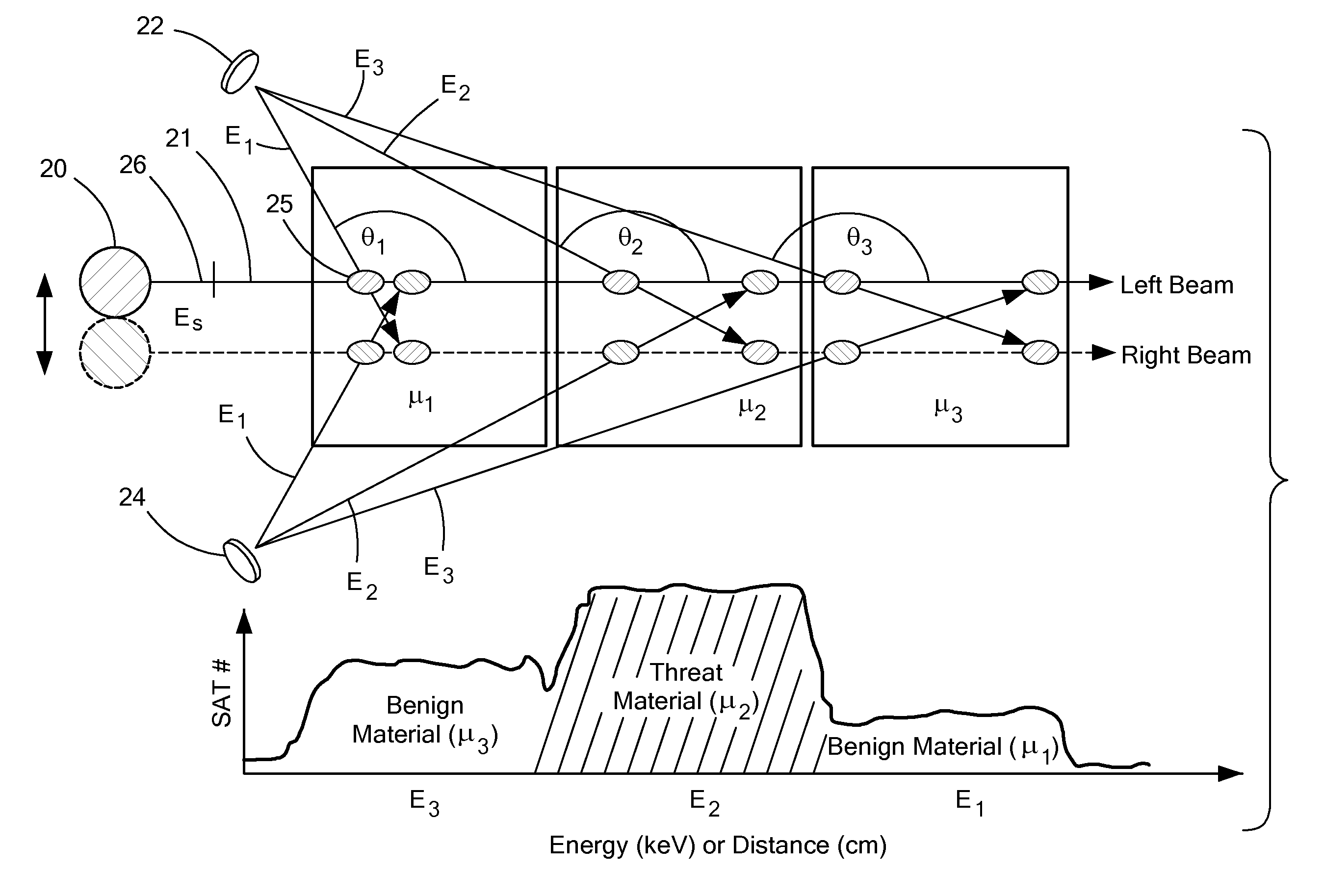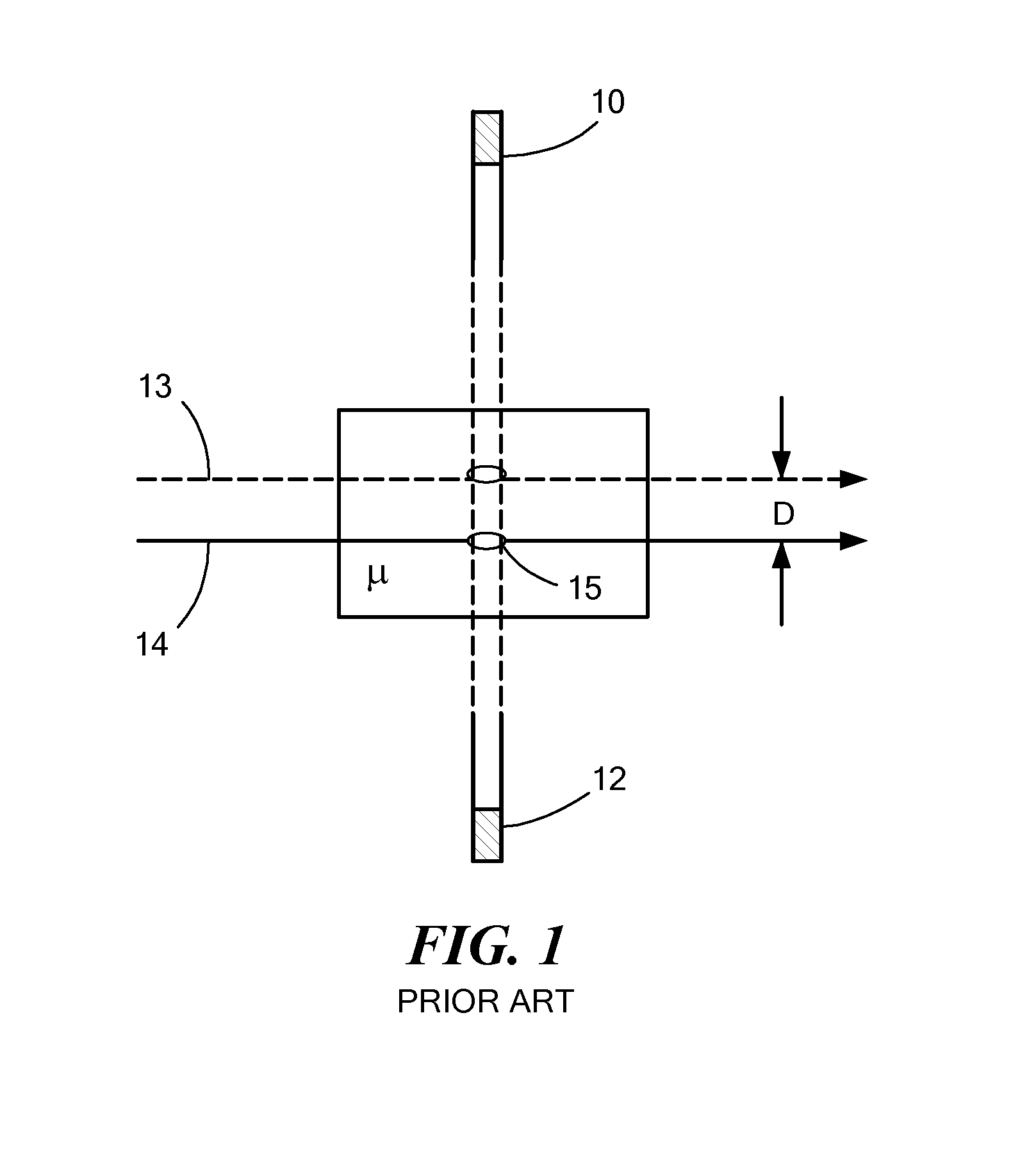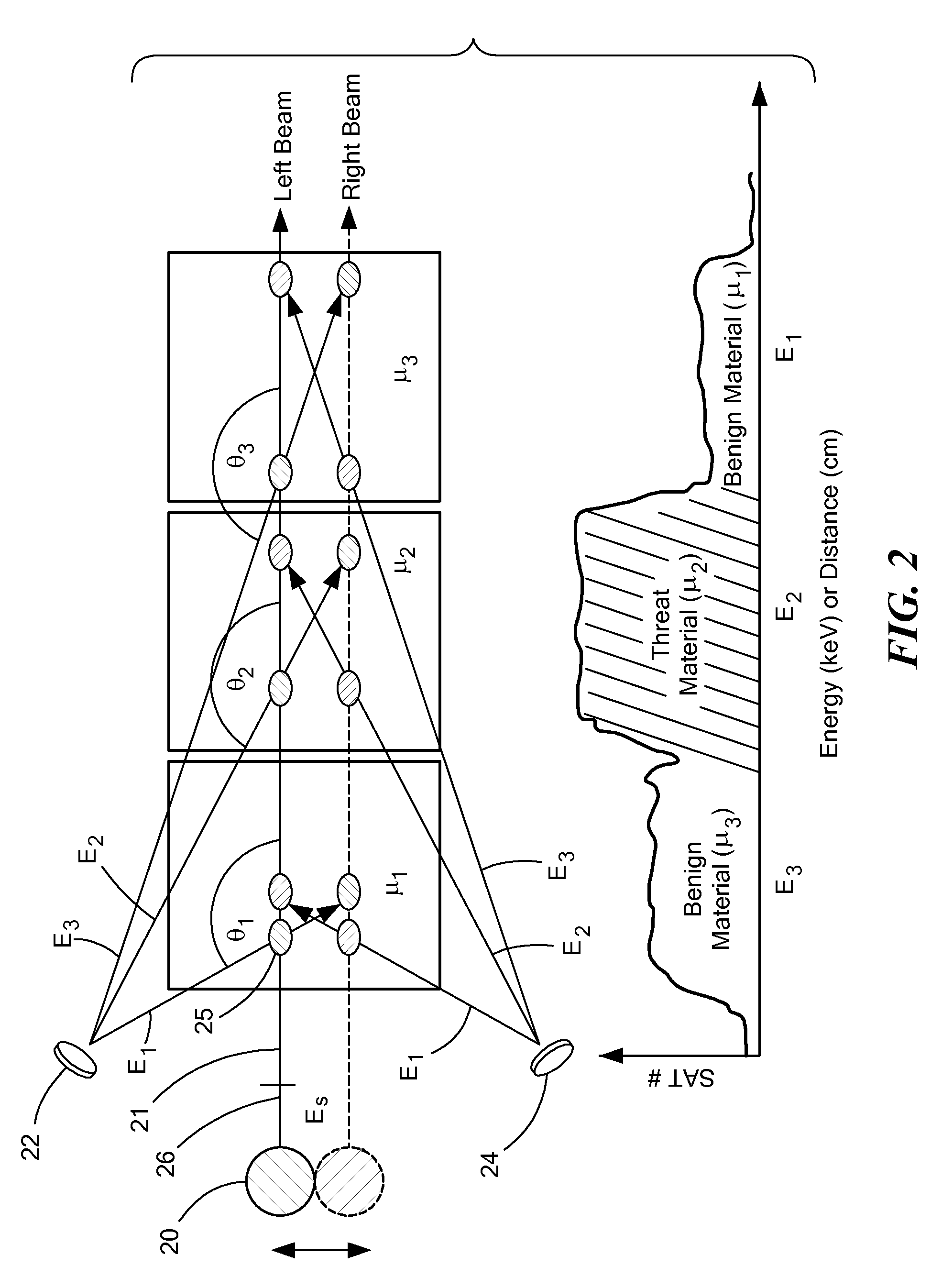Scatter attenuation tomography using a monochromatic radiation source
a radiation source and scattering attenuation technology, applied in the direction of material analysis, material analysis using wave/particle radiation, instruments, etc., can solve the problems of large size and cost of x-ray ct system, large size and cost, and add considerable expense and complexity
- Summary
- Abstract
- Description
- Claims
- Application Information
AI Technical Summary
Benefits of technology
Problems solved by technology
Method used
Image
Examples
Embodiment Construction
[0022]Limitations of the apparatus and methods of SAT as current known and practiced in the art may be advantageously overcome in accordance with embodiments of the present invention now described. In accordance with preferred embodiments of the present invention, a collimated monochromatic radiation source (e.g., a radioactive source instead of an x-ray tube or other x-ray generating device, or a source filtered to emit substantially within a narrow band of energies) and a plurality—typically a pair—of uncollimated, energy-resolving detectors. As will be shown, the advantages of the invention are that all materials illuminated by the beam can be interrogated simultaneously, instead of restriction to a single sub-volume, as in the case of the prior art SAT techniques. This means that the precise location (along the beam) of the suspect region need not be known beforehand. A tradeoff incurred in practicing methods in accordance with the present invention is that interrogation times m...
PUM
| Property | Measurement | Unit |
|---|---|---|
| density | aaaaa | aaaaa |
| density | aaaaa | aaaaa |
| energy | aaaaa | aaaaa |
Abstract
Description
Claims
Application Information
 Login to View More
Login to View More - R&D
- Intellectual Property
- Life Sciences
- Materials
- Tech Scout
- Unparalleled Data Quality
- Higher Quality Content
- 60% Fewer Hallucinations
Browse by: Latest US Patents, China's latest patents, Technical Efficacy Thesaurus, Application Domain, Technology Topic, Popular Technical Reports.
© 2025 PatSnap. All rights reserved.Legal|Privacy policy|Modern Slavery Act Transparency Statement|Sitemap|About US| Contact US: help@patsnap.com



